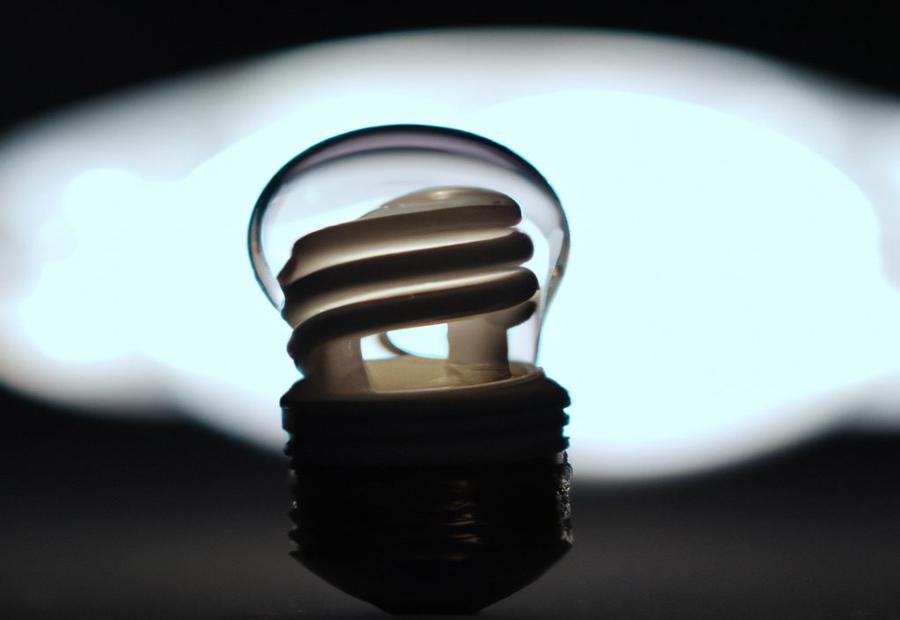Last Updated on 9 months by Francis
.jpg)
Introduction to LED Lights and Batteries
LED lights have gained immense popularity in recent years due to their energy efficiency, long lifespan, and versatility. These lights are powered by batteries, making them a convenient lighting option for various applications, such as camping, emergency situations, or remote areas without access to electricity.
The longevity of LED lights on batteries is a common concern for many users. In this article, we will explore the factors that affect LED light battery life, understand how LED lights consume battery power, learn how to calculate battery life for LED lights, and discover tips for maximizing battery life. We will discuss other important considerations, such as the effects of dimming and environmental factors, to help you make the most of your LED lights on batteries.
Contents
Key takeaway:
- LED lights last longer on batteries: LED lights are more energy efficient, allowing them to last longer on batteries compared to traditional lighting options.
- Factors affecting LED light battery life: The duration of LED lights on batteries can be influenced by various factors such as the energy efficiency of the LEDs, battery capacity, and voltage.
- Tips for maximizing LED light battery life: To extend the life of LED lights on batteries, it is important to choose the right battery and reduce power consumption.
How Long Do LED Lights Last on Batteries?
When it comes to the burning question of how long LED lights last on batteries, there are a few key factors to consider. In this section, we’ll uncover the secrets behind the battery life of LED lights. From the impact of brightness levels to the type of batteries used, we’ll dive into the factors that can affect how long your LED lights will shine. So, if you’re tired of your battery-powered LED lights burning out too quickly, get ready for some valuable insights that will keep your lights glowing for longer.
Factors Affecting LED Light Battery Life
When using LED lights, it is important to understand the factors that affect LED light battery life. By considering these factors, you can optimize the longevity of your batteries and ensure efficient use of your LED lights.
| 1. Battery Capacity: | The higher the battery capacity, the longer the LED light will last. Choose batteries with a higher mAh rating for extended usage. |
| 2. LED Light Intensity: | Brighter LED lights consume more power and drain the battery faster. Lower intensity settings can help prolong battery life. |
| 3. Usage Time: | The duration for which the LED lights are used affects battery life. Longer usage time will decrease battery life more quickly. |
| 4. Battery Type: | Different battery chemistries have varying power capacities and discharge rates. Higher quality batteries often provide longer-lasting power. |
| 5. Ambient Temperature: | Extreme temperatures, both hot and cold, can impact battery performance. Avoid exposing batteries to extreme temperatures for optimal performance. |
Remember to consider these factors when using LED lights on batteries to maximize battery life and ensure efficient usage. FACT: Using batteries with a higher capacity can significantly extend the lifespan of LED lights.
Understanding LED Light Battery Consumption

Photo Credits: Infraredforhealth.Com by George Green
When it comes to understanding LED light battery consumption, there are two key factors to consider: the energy efficiency of LED lights and the capacity and voltage of the batteries. In this section, we’ll explore the fascinating world of how LED lights impact battery life. From illuminating facts about energy efficiency to unlocking the secrets of battery capacity and voltage, get ready to discover how long your LED lights can truly last on batteries.
Energy Efficiency of LED Lights
When it comes to energy efficiency, LED lights have numerous advantages over traditional lighting options. Here are key factors to consider:
- Lumens per watt: LED lights are renowned for their high efficiency in converting energy into light. They typically produce more lumens per watt compared to incandescent or fluorescent lights, resulting in less energy wasted as heat. On average, LED lights can produce around 80-100 lumens per watt.
- Directional lighting: LED lights emit light in a specific direction, unlike traditional lights that emit light in all directions. This feature ensures that LED lights provide focused illumination, reducing wastage and increasing efficiency.
- Instantaneous start-up: LED lights require no warm-up time and instantly reach full brightness. This is in contrast to other energy-saving lighting options, such as compact fluorescent lights (CFLs), which can take some time to reach their maximum output.
- Low power consumption: LED lights consume less power compared to traditional lighting options. This can result in significant energy savings, especially in large-scale applications.
To maximize the energy efficiency of LED lights, consider the following suggestions:
- Choose LED lights with high lumens per watt ratings for maximum brightness with minimal energy consumption.
- Utilize dimmers or motion sensors to adjust the light output based on the specific lighting needs, reducing energy usage when full brightness is not required.
- Regularly clean and maintain LED lights to ensure optimal performance and efficiency.
- Consider investing in smart lighting systems that allow for better control and automation, optimizing energy usage.
Battery Capacity and Voltage
When considering battery capacity and voltage for LED lights, it is important to select the appropriate battery.
Common batteries used for LED lights include AAA, AA, C, D, and 9V, each with its own specific capacity and voltage.
AAA, AA, C, and D batteries typically have a capacity of around 1000-3000mAh and a voltage of 1.5V. These batteries are suitable for smaller LED lights and devices.
On the other hand, 9V batteries have a capacity of around 500-600mAh and a voltage of 9V. These batteries are commonly used for larger LED lights and devices.
Choosing the right battery with the correct capacity and voltage is crucial for ensuring optimal performance and longevity of LED lights. Using a battery with insufficient capacity may result in shorter battery life, while using a battery with incorrect voltage may cause the LED lights to not function properly.
It is recommended to check the manufacturer’s specifications and requirements for the LED lights to determine the appropriate battery capacity and voltage for optimal performance.
Calculating LED Light Battery Life
When it comes to the longevity of LED lights on batteries, the key lies in calculating their battery life. In this section, we’ll dive into the nitty-gritty of estimating how many hours an LED light can last on a battery. We’ll also explore the fascinating world of calculating LED light battery life in terms of days. Prepare to be enlightened with practical insights backed by reliable data. Get ready to master the art of maximizing your LED light’s battery life!
Estimating Battery Life in Hours
To accurately estimate the battery life in hours for LED lights, you can follow these steps:
- First, you need to identify the wattage of the LED light. You can find this information on the packaging or the product itself.
- Next, determine the capacity of the battery in ampere-hours (Ah). You can find this information on the battery or in the product specifications.
- Now, you can calculate the energy consumption of the LED light by multiplying the wattage by the operating time in hours.
- Using the formula: Current (A) = Power (W) / Voltage (V), divide the energy consumption by the battery’s voltage to obtain the current in amperes (A).
- Lastly, divide the battery’s capacity by the current to estimate the battery life in hours. For example, if the battery has a capacity of 5 Ah and the LED light consumes 0.5 A, the estimated battery life would be 10 hours (5 Ah / 0.5 A).
By following these steps, you can accurately estimate the battery life in hours for your LED lights.
Calculating Battery Life in Days
To calculate the battery life of LED lights in days, you need to know the battery capacity in ampere-hours (Ah) and the power consumption of the LED lights in watts (W).
Determine the average power consumption of the LED lights by checking the manufacturer’s specifications or using a watt meter.
Convert the power consumption from watts to kilowatt-hours (kWh) by dividing the power consumption by 1000.
Calculate the energy consumption per day by multiplying the power consumption in kWh by the number of hours the LED lights are used per day.
Divide the battery capacity in Ah by the energy consumption per day to get the estimated number of days the battery will last.
For example, if the LED lights have a power consumption of 5 watts and are used for 4 hours per day, and the battery capacity is 20 Ah:
1. The power consumption in kWh is 5/1000 = 0.005 kWh.
2. The energy consumption per day is 0.005 kWh * 4 hours = 0.02 kWh.
3. The estimated battery life in days is 20 Ah / 0.02 kWh = 1000 days.
Remember that these calculations are estimates and may vary depending on factors such as the efficiency of the LED lights and the condition of the battery. It’s always a good idea to test and monitor the actual battery life to ensure accurate results.
Tips for Maximizing LED Light Battery Life
Looking to make your LED lights last longer on batteries? Check out these tips to maximize your LED light battery life. Discover how choosing the right battery and reducing power consumption can significantly extend the lifespan of your LED lights. Say goodbye to frequent battery changes and enjoy prolonged illumination.
Choosing the Right Battery
When it comes to choosing the right battery for LED lights, there are a few factors to consider. Here is a table that outlines the important aspects:
| Battery Type | Voltage | Capacity | Cost |
| Alkaline | 1.5V | Varies depending on the brand | Affordable |
| Lithium | 3V | Higher capacity than alkaline | More expensive |
| Nickel-Metal Hydride (NiMH) | 1.2V | Lower capacity than alkaline | Rechargeable |
Choosing the right battery depends on your specific needs. If you require longer battery life and can afford a higher cost, lithium batteries are a good option. Alkaline batteries are more affordable but may not last as long. If you want the convenience of rechargeable batteries, NiMH batteries are a suitable choice, although they have a slightly lower capacity compared to alkaline batteries.
Consider the voltage requirements of your LED lights and ensure that the chosen battery provides the appropriate voltage to power them effectively. Additionally, think about the desired runtime and budget constraints when making your decision. By evaluating these factors, you can make an informed choice when choosing the right battery for your LED lights.
Reducing Power Consumption
Reducing power consumption is essential for maximizing the battery life of LED lights. Here are some effective ways to achieve this:
- Choose energy-efficient LED lights: Opt for LED lights that have a high energy efficiency rating. Look for lights with low wattage and high lumens to ensure they provide bright light while consuming less power.
- Utilize dimming options: Take advantage of the dimming feature on LED lights. By reducing the brightness level, you can significantly lower power consumption. Adjust the dimmer to a comfortable level that meets your lighting needs while saving energy.
- Turn off lights when not in use: Develop a habit of switching off LED lights when they are not needed. This simple action can conserve battery power and extend the overall life of the batteries.
- Consider motion sensor lights: Install LED lights with motion sensors in areas that don’t require constant illumination. These lights will only activate when motion is detected, saving energy by not being on unnecessarily.
- Avoid using additional features: Some LED lights may have additional features like built-in timers or flashing modes. These features can consume more power, so it’s best to avoid using them if not necessary.
By implementing these power-saving strategies, you can reduce power consumption and prolong the battery life of LED lights, providing you with longer-lasting illumination.
Other Considerations for LED Lights on Batteries
When it comes to using LED lights on batteries, it’s important to consider those other factors that can influence performance. In this section, we’ll dive into the effects of dimming on battery life and explore the impact of environmental factors. So, if you’re curious about how dimming affects your LED lights’ battery life or how environmental conditions play a role, keep reading for some enlightening insights. You might be surprised by what you discover!
Effects of Dimming on Battery Life
The impact of dimming on battery life in LED lights is a crucial aspect that significantly affects the overall performance and lifespan of batteries. It is essential to consider the following key points:
1. Dimming decreases power consumption: When LED lights are dimmed, they consume less power than when operating at full brightness. This, in turn, extends the battery life.
2. Battery capacity and voltage: The capacity and voltage of batteries play a role in determining the dimming capabilities of LED lights. Batteries with higher capacity may allow for longer periods of dimming.
3. Dimming settings and usage: The specific dimming settings and patterns of usage have an impact on battery life. For example, operating at a lower dimming setting can prolong the battery life compared to using maximum brightness.
4. Environmental factors: Environmental conditions, such as temperature and humidity, can affect battery performance, including dimming capabilities. Extreme temperatures can reduce battery efficiency and lifespan.
5. Optimizing battery usage: To maximize battery life when dimming LED lights, it is crucial to choose energy-efficient LED bulbs and select the appropriate dimming level for the desired brightness. Regularly monitoring battery levels and replacing them when necessary ensures optimal performance.
By considering these factors, users can gain a deeper understanding of the effects of dimming on battery life in LED lights and make well-informed decisions when utilizing dimmable LED lighting systems.
Environmental Factors
When it comes to the longevity of LED lights on batteries, there are several environmental factors that can affect their performance:
- Temperature: Extreme temperatures, both hot and cold, can have a negative impact on the battery life of LED lights. It is important to keep the lights in a temperature-controlled environment to optimize their performance.
- Humidity: High humidity levels can cause moisture buildup inside the LED lights, leading to corrosion and reduced battery life. It is advisable to use moisture-resistant LED lights in areas with high humidity.
- Vibration: Excessive vibration can cause damage to the internal components of LED lights, including the battery. To ensure longer battery life, it is essential to install LED lights securely in areas with significant vibrations.
- Dust and dirt: Accumulation of dust and dirt can obstruct the airflow and heat dissipation of LED lights, leading to overheating and reduced battery life. Regular cleaning and maintenance of the lights can help prevent this issue.
- Exposure to sunlight: Prolonged exposure to direct sunlight can cause damage to the battery of LED lights. It is recommended to install the lights in shaded areas or use UV-resistant materials to protect them from the sun.
Fact: Studies have shown that LED lights have a longer lifespan compared to traditional lighting options, making them more environmentally friendly and cost-effective in the long run.
Some Well-known Facts About How Long Do LED Lights Last on Batteries:
- ✅ The lifespan of battery-powered LED lights depends on various factors such as battery type, capacity, load, voltage, and battery life. (Source: Portable Power Guides)
- ✅ LED lights connected to batteries can last for different durations depending on the battery size, capacity, and quality. (Source: Facts Maniya)
- ✅ Battery life of LED strip lights can be extended by turning off the lights when not in use, reducing the number of lights used, and using high-quality batteries and low-wattage LED lights. (Source: Our Team)
- ✅ The battery life of LED lights gradually fades when the batteries are running out, indicating that they are about to die. (Source: Our Team)
- ✅ The lifespan of battery-powered LED lights can be estimated by multiplying the amp-hours of the batteries by the volts and then dividing the result by the total wattage of the LED lights. (Source: Our Team)
Frequently Asked Questions
How long do LED lights last on batteries?
The lifespan of LED lights on batteries depends on various factors, including the type of battery used, the capacity of the battery, and the wattage of the lights. LED strip lights can last anywhere from a few hours to several days on batteries, while battery-powered fairy string lights can last 18-24 hours with AA batteries and over 100 hours with micro drop lights.
What type of battery is recommended for LED strip lights?
The type of battery recommended for LED strip lights depends on the specific lighting installation and power needs. For most LED strip lighting, AA batteries or circular C-style batteries are commonly used. Car batteries, with capacities around 60 Ah, are more than enough for most people’s LED lighting needs.
How can I extend the battery life of LED lights?
There are several ways to extend the battery life of LED lights. You can turn off the lights when not in use, reduce the number of lights used, use high-quality batteries and low-wattage LED lights, and add a switch or dimmer to the LED-to-battery connection. These measures can help optimize the battery usage and prolong the lifespan of the LED lights.
What factors affect the battery life of LED lights?
The battery life of LED lights can be influenced by various factors, including the type and capacity of the battery, the wattage of the lights, the quality of the batteries, and the electrical draw of the lights. Using batteries with higher capacities, lower-wattage LED lights, and high-quality batteries can generally result in longer battery life.
How do I calculate the battery life for LED lights?
To estimate the battery life for LED lights, you can use the formula Watts = Amps x Volts to determine the power of the battery. Divide the battery capacity (measured in mAh or Ah) by the total wattage of the LED strip lights. The result will give you an estimate of how long the battery will last based on the power consumption of the lights.
Where can I find assistance in choosing the right LED light strip and battery?
The company referenced in the sources offers a free eBook as a guide to choosing the right LED light strip. Additionally, their expert team is available for assistance. You can contact them to get expert advice and recommendations based on your specific requirements and preferences.


.jpg)
.jpg)
.jpg)


